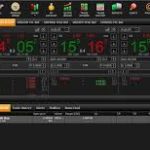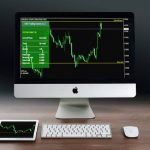What is 1:1 Leverage When Trading Forex?

The concept of leverage in the online forex trading market can be one of the most challenging to understand. This is especially the case as it relates to the concept of margin. We’ve been approached by several of our clients who are curious to understand how 1:1 leverage works when trading forex. Given how often this question comes up in discussions, we’d like to share a detailed answer with our global audience.
1:1 leverage simply means that one is trading forex without any type of leverage at all. In practical terms 1:1 leverage means that if you were to exchange 1,000 Euro for the equivalent in dollars, you would need to exchange the full amount.
How Does 1:1 Leverage Work In the Forex Market?
To better understand this concept, let’s imagine that you find yourself at the airport currency exchange booth. If you’ve ever exchanged money at an airport before, then you are essentially trading on 1:1 leverage.
Taking the example further, let’s say that you exchange 500 worth of Euro for US dollars during a visit to the United States. Unfortunately, let’s imagine that you misplace the money you exchanged, only discovering it in your clothing after returning from your holiday. When you look at the exchange rate of the dollars you purchased, you discover that the dollar strengthened significantly during your travels, so when you exchange your money back at your bank, you receive 580 Euro, netting a small profit.
In this hypothetical example, you made a trade on 1:1 leverage. Most likely you wouldn’t look at it in this way but in essence, you fully exchanged one sum of money for another – that is essentially 1:1 leverage, which in other words means no leverage at all.
The Advantage of Leverage When Trading Forex
The reason that leverage in the forex market exists is due to the fact that the price of currencies do not exhibit major price fluctuations on a daily basis. Generally speaking, the Euro only moves 1 or 2 cents from day to day against the US dollar. For this reason, there is little potential for financial gain when exchanging 100, or even 500 Euro on a short term basis. Going back to our example, a profit of 80 Euro was made which is a rather extreme case for even a couple weeks of trading.
The only way to realize any significant financial profit when trading forex online is to trade a larger amount such as 1,000 or 10,000. This is where the concept of leverage enters the picture. Via leverage, investors are able to maximize returns (and also losses) by having more available capital at their disposal.
Let’s consider another example. Imagine trading with a broker that is offering 100:1 leverage. Essentially, 100:1 leverage would allow an investor to trade up to 100,000 units of currency (US dollars, Euro, or British pounds). The beauty of leverage is that the investor in our example would only need to deposit $1,000 of their own money as margin in order to control up to 100,000 of purchasing power! This is why it doesn’t make sense for a broker to offer 1:1 leverage. Imagine for a moment that leverage wasn’t available, if an investor wished to perform the same transaction on 1:1 leverage, they would need to have $100,000.
Forex Consulting – Consultation Services for New and Experienced Traders Alike
We hope this article was helpful in your understanding of leverage. If you are new to trading forex online and looking for the right broker to partner with, we are happy to assist you.
Due to our strong network and industry experience, we are glad to connect you to several We are more than happy to reliable and trustworthy forex brokers. Get in touch with us today to explore this opportunity further!
What is Forex & CFD Spread Betting? – A Simple Definition of Spread Betting

If you’ve been browsing through forex & CFD related websites, especially in the UK, you may have come across the term spread betting. The idea of spread betting often raises several questions from our clients: What exactly is spread betting? What is the difference is between spread betting and traditional CFD and FX trading?
What is Spread Betting & How Does it Differ from Forex & CFD Trading?
If you are a resident of the United Kingdom, then you have the unique ability to open up a spread betting account. On paper there is no difference in functionality between a forex / CFD trading account and a spread betting account. The main difference is financial.
United Kingdom residents who open a spread betting account do not have to pay taxes on profits. A simple definition of spread betting would then be forex & CFD trading without the need to pay taxes. It’s worth emphasizing that everything else in a spread betting account remains the same: margin, leverage, available pairs for trading and the software as just a few examples.
Limitations of Forex & CFD Spread Betting
Now that we’ve covered the definition of spread betting, it’s worth exploring some of its limitations. Spread betting is a service limited to residents of the United Kingdom. Our team has performed research on this topic and have yet to discover another country in the world offering a service similar to spread betting. This means that you cannot participate in spread betting unless you have residency in the United Kingdom.
As a final thought, spread betting can also apply to the non-forex & CFD markets as well. For example, it’s possible to open a spread betting account to place wagers on sporting or political events. From our perspective, the largest share of spread betting accounts are in the forex & CFD market.
Forex Consultation Services – Guidance in Selecting the Best Forex, CFD, and Spread Betting Broker
We hope you found our definition of spread betting useful. If you are interested in trading forex & CFDs, we can assist you in finding the most trustworthy and reliable brokers in the marketplace. Additionally, we can also recommend some spread betting firms to consider trading with as well. We look forward to hearing from you!
An Overview of Forex Trading Software & White Label Providers

If you are interested in setting up your own forex brokerage, then it is crucial to select a stable and reliable forex trading platform that your clients will use for both live and demo trading.
Based on our experience, it makes the most sense to start off with a white label trading platform, especially in the beginning stages of launching a new forex brokerage. The main reason is that forex white label technology offers all the benefits of a fully licensed brokerage technology but at a fraction of the cost.
Although it may be tempting to build the trading technology yourself, from our standpoint this would be a costly undertaking, not only in time but also in money. If you are interested in becoming your own forex brokerage, then we suggest that you consider one of the software providers we’ve outlined below.
MetaQuotes – MT4 & MT5
The most popular trading platform in the forex industry is the MetaTrader line of products, namely MetaTrader 4 (MT4) and MetaTrader 5 (MT5). Both platforms, starting with MT4, took the forex market by storm by offering traders the ability to run automated trading systems or algorithms within the software. As time passed, MT4 and MT5 grew in popularity to become a must have for forex brokers, both new and established.
Condor 5.0 Trading Platform

The Condor Trading Platform is another forex trading system to consider. It has several advantages over MT4 and MT5:
- Reporting is far more robust, extensive, and easier to operate than the systems offered by MetaTrader
- More flexibility in regards to margin settings across groups and individual accounts
- The ability to trade via FIX API, something not possible with MT4
- Trade sizes are not limited to lots and can be done in any amount
- More flexibility for white labels in terms of pricing customization, group management, and product customization
- Competitive set up and monthly maintenance fees for white labels
If you are interested in exploring this platform in more detail, you can check out a free preview of the Condor Trading Platform here.
cTrader
cTrader is another forex trading platform with a heavy focus on algorithmic trading. Those who are looking to automate their trading systems will be pleased to see that cTrader makes its API public so anyone can easily build and tweak their systems.
Launch For Own Forex Broker Today
We hope this overview was helpful in providing a brief guide of the forex trading platforms currently available on the market. If you are a forex broker startup and wish to explore the various white label technology offers available, feel free to reach out to us. Our team of experts are more than happy to not only have a detailed discussion about each platform but also discuss every step needed to start your own forex broker.
What is the Definition & Meaning of Liquidity in the Forex Market?

Investors and entrepreneurs who are new to online forex & CFD trading are often bombarded with terminology that can be intimidating at times. It’s one of the reasons we developed our Forex Trading Glossary since we found it has helped newcomers to the FX market clear up much of the confusion surrounding the lingo around forex & CFD trading.
An example of a term that can be confusing upon first glance is the phrase liquidity. As we’ll soon discover, liquidity is a service that is an essential component for any forex broker to properly operate.
The term liquidity most likely conjures up images of waterfalls, rivers or perhaps a faucet. Obviously, liquidity in the FX market has nothing to do with either plumbing or nature, although there is some correlation in the name itself, as we’ll shortly discover.
What is the Meaning of Liquidity in the Forex Market? – The Definition of Liquidity
To get started, let’s provide a simple definition of the term liquidity in the forex trading market. As you’ll soon discover, the concept of liquidity is not as intimidating as it may appear at first glance. A basic definition of liquidity is both the pricing and execution of trades in a forex broker’s trading platform.
Let’s consider a simple analogy to further help one understand the definition of liquidity in the FX market. Imagine turning on the water in your bathroom or kitchen, only to discover that the faucet is not working. Keep this image in your mind and now think of launching your favorite FX trading platform, except when you go to check the live market rates, you discover the prices aren’t moving at all. Similar to the water faucet not working, when the prices do not move in a trading platform, there is an issue with the broker’s feed, which is the responsibility of the liquidity provider to fix.

Further Understanding Liquidity in the Forex & CFD Market
In essence, liquidity refers to the price stream that is constantly being updated in your FX broker’s trading terminal. Note that liquidity isn’t limited to forex pairs but also CFDs and even crytpocurrencies. When prices aren’t moving in the a forex broker’s trading platform, as in our prior example, then the broker is most likely having a connection problem with its liquidity provider.
It’s important to emphasize that liquidity is more than just pricing; it’s also the execution of the orders you see flashing on your screen. Simply put, order execution is what happens when a trader buys or sells any forex pair, stock, or CFD.
Once the order is placed in the trading platform, it must be routed to either a bank, hedge fund, or other clearing party which are collectively known as liquidity providers. When the LP (liquidity provider) receives the trade request, known as confirmation, it is then executed and routed back to the broker. The trader, who placed the order, will then the open trade in their platform. What’s amazing is that this entire scenario described above will happen in a matter of milliseconds!
Forex Consulting Services – Your Guide to Understanding the Forex Trading Market
We hope our definition of liquidity in the forex market helped you to better understand its meaning. If you would like to explore other terms, make sure to check out our Forex Trading Glossary where we provide helpful answers for some of the most common inquiries found when trading forex.
Finally, if you are new to trading and require guidance in selecting the broker that’s right for you, make sure to reach out to our team of consultants. We are more than happy to explore your specific needs further. We look forward to hearing from you!
What is the Definition of a White Label in the Forex Trading Market?

Our team of FX consultants speak to new investors on nearly a daily basis about the nuances of trading forex & CFDs. Because many of the traders who contact us are newcomers to the world of FX trading, we are often asked for a simple way to define forex white label technology.
You may be surprised to discover that the meaning behind forex white label technology is quite simple: A forex white label can be defined as the trading software that forex brokers use to run their business. If you’ve ever logged into a live or demo forex trading account, you may not realize it, but you’ve already had experience working with a forex white label.
Understanding Forex White Label Platforms & Technology
To dig a bit deeper, the term “white label” refers to the branding, or labeling of forex trading technology. In many cases this technology may be MT4 & MT5 but there are other platforms available as well. In order to properly understand the definition of a forex white label, let’s think about where the name originated from. The term “white label” borrows its name from products that you see on the shelf of your supermarket or grocery store.
Whether it is forex trading, or any business for that matter, if you don’t market your product, then why would any customer consider buying it? As we all know, it’s important to promote any product in order to catch the eye of customers. This concept is no different when trading forex.
Taking this example further, imagine a row of canned goods at the supermarket with fancy labels. Now you stumble across one can without any branding or label on it. Let’s imagine that it’s a gray can sitting next to all the labeled products. Why would any shopper in our example choose the unbranded can over the others with fancy labels? For that matter, what would the consumer even know about what’s inside the can? The answers to these questions should help to illustrate the importance of a white label to the overall success of a forex broker.
Selecting the Best Forex White Label Provider Requires Careful Thought

White label technology is an indispensable component to any new forex brokerage; without a software platform for your clients to trade with, there is no realistic way to grow a forex brokerage business. A challenge that new forex brokerages face is to form a partnership with a reputable and financially sound white label technology provider. Similar to selecting a liquidity provider, it is important to carefully evaluate the firm you ultimately decide to partner with before launching the business.
As a final thought, the most popular white label providers have partnered with MetaTrader 4 (MT4) or MetaTrader 5 (MT5). Although MT4 and MT5 are the most recognized trading platforms in the forex trading industry, there are other forex white label software providers besides MetaQutoes to consider. If you are interested in exploring some alternatives to MT4 or MT5, we are happy to show you some options to evaluate.
Forex White Label Solutions Powered by the Forex Consulting Team
With decades of experience in the forex & CFD trading industry, the Forex Consulting team is the ideal partner to help you successfully launch your own forex white label. Not only do we provide the technology needed to successfully launch a forex white label, we can also offer you access to several liquidity providers, give assistance with the creation of a website and also provide access to a CRM backend for your end users.
To learn more about how much a forex white label costs, discover the white label trading platforms that are available for leasing, and to further explore liquidity provider options, don’t hesitate to contact us.
Banking & Payment Challenges for Unlicensed / Unregulated Offshore Forex Brokers

Whether you would like to start your own forex broker, or are currently operating an existing, unregulated brokerage, chances are you’ve already run into challenges with payment providers. Experience has shown that it’s wise to sort out payment and banking options before your broker becomes too large.
Acquiring new clients is challenging enough, and can become ever the more frustrating when your forex broker runs into nightmare scenarios that some of our clients have faced: freezing of payments, bank account closure or discovering a payment provider has outright disappeared.
Why is Obtaining a Bank Account so Difficult for New or Unlicensed Offshore Forex Brokerages?
Back in the early 2000s, the online forex & CFD market was in its early growth stages so new forex brokers could obtain bank accounts and other payment solutions with relative ease. The reason a new forex broker could more easily obtain a bank account in the past was due to the fact that the global banks themselves didn’t fully understand forex & CFD trading. Additionally, in the early 2000s there was less regulatory oversight for the trading of forex & CFDs, meaning banks were simply less cautious with new clientele. This situation dramatically changed, especially in the past 3 to 4 years, where banks have become far more cautious about the online forex trading industry as a whole.
The reason why it is now more difficult for offshore FX brokers to obtain bank account is that forex trading happens to fall into a high risk category for banks and payment service providers. Unfortunately, there have been too many brokers, mostly unregulated, that have given the forex industry a bad reputation. As a result, the entire reputation of the online forex trading industry as a whole has suffered. For this reason, it is now very difficult to obtain a banking solution if your broker is registered in an unregulated offshore region.

Forex Brokers Must Exercise Caution with Unregulated Payment Service Providers (PSPs) and Newly Formed Banks
Unregulated forex brokers registered offshore are often tempted to seek out creative options when it comes to securing banking solutions. We’ve seen consultants offering bank accounts in Eastern Europe, Balkan countries, or relatively unknown islands. From our experience, it is best to avoid these types of banking solutions since they rarely work out in the long run. There is a high probability that the account will be closed, or worse that the bank simply freezes the funds for an indefinite period. Sadly, we’ve heard far too many horror stories about these type of banking providers, leaving our consulting team very skeptical.
Similar to our advice concerning bank accounts, it’s important to carefully research any payment service provider (PSP) that is operating unlicensed. We strongly urge forex brokers to steer clear from unregulated and unlicensed PSPs. Because there are so few payment solutions available for unregulated forex brokers, many unlicensed payment solution providers have emerged that may appear to offer a viable solution. Unfortunately, we’ve encountered far too many clients who have had their funds either frozen or lost completely, which is why we strongly urge any broker considering these solution providers to exercise caution.
The Bottom Line: Banking is a Challenge for Unregulated Forex Brokers
The simple truth is that attempting to obtain a bank account for an unlicensed, offshore forex broker is almost impossible. There are, however, a few options to consider. If banking is essential to the future success of your forex brokerage, then it makes to think about obtaining a forex broker license. Secondly, if you’ve found a banking or payment solution but aren’t certain about its credibility, we are happy to provide our analysis. Finally, we have a unique idea for those willing to think a little bit “outside the box.” Feel free to reach out to us to learn more about it.
Forex Consulting – License & Regulation Consultation Services for FX Brokers
Whether you are a looking to start a new forex broker or a represent an existing FX brokerage that is currently in the process of selecting a PSP provider, payment gateway or bank account, we are more than happy to provide our professional assessment.
To receive our opinion about a particular PSP, discuss payment options in more detail, or ask a simple question, don’t hesitate to reach out to us today!
Why Forex Brokers Should Offer cTrader to Their Clients – 4 New Updates Reveal the Answer

In the competitive world of forex & CFD trading platforms, cTrader has continued to push the envelope by offering a comprehensive product suite to its users. It would be a mistake to assume all traders are made the same, having the exact same needs and requirements. For this reason, FX brokers should strongly consider offering a portfolio of trading platforms to their client base in order to cast the widest net possible, cTrader being an excellent case study.
4 Reasons Your Broker Should Strongly Consider Adopting cTrader Technology
Market Sentiment Indicator – This indicator has grown in popularity over the years as it provides an excellent snapshot into the collective view of market positioning. An added bonus is that cTrader offers this data in real time so traders can feel confident the data accurately reflects current market conditions. Finally, cTrader boasts a global client base, ensuring that the sentiment data has been smoothed over for regional and other outlying factors that may otherwise distort it.
Dynamic / Multi-Tier Commissions Available Directly in the Software – Developing and growing IB relationships is an integral aspect of any successful forex brokerage. FX brokers working with cTrader will be happy to know that dynamic IB commission structures are built within the platform itself. Rather than relying on a plugin or external CRM to handle multi-level rebates, in cTrader all calculations happen within the platform itself, making it a breeze to manage multiple IB / Partner relationships.
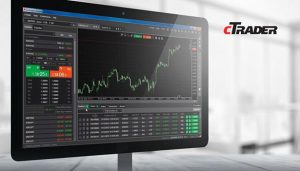
Deposit Bonus Calculations – Deposit bonuses in the FX industry have grown in popularity, especially in the past few years. Although simple in appearance, properly implementing a deposit bonus scheme requires a fair amount of logistics and planning. A major advantage of the cTrader platform is that the backend has been programmed to handle the most popular type of deposit bonus structures such as no deposit bonuses, volume based bonus payouts and account credits. Because this feature is native to the cTrader platform, no external software solution or plug-in is required for FX brokers using cTrader to offer deposit bonuses to their clients.
cTrader Offers Reporting Flexibility – Finally, by making raw, real time data easily available, cTrader is able to accommodate the various reporting and compliance changes currently happening around the globe. The ease of generating reports in cTrader makes regulatory paperwork a much easier process for FX brokers to manage.
Check Out cTrader Today and Experience the Difference
cTrader was developed by Spotware, a Cyprus-based technology provider that has been active in the market since 2010. While the overview we provided is quite helpful, it has only scratched the surface as far as the software’s full capabilities are concerned. For this reason, we encourage you to either check out a demo of cTrader today or to contact our team to learn more about the advantages of adding cTrader to your broker’s suite of software products.
Forex Consulting – FX Broker Software Expertise & Analysis
Our mission at Forex Consulting is to provide a comprehensive overview of the major types of software in the online forex & CFD space. In addition, we also share our thoughts and analysis on all aspects of the industry, from FX broker technology all the way to guidance on licensing, banking and payments.
If you have any questions about cTrader, or the best forex trading software for launching a new brokerage, don’t hesitate to contact one of experienced consultants today. We look forward to hearing from you!
What is Slippage in the Forex (Foreign Exchange) Market?
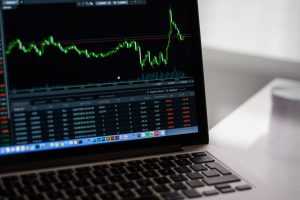
Slippage is one of the many bits of lingo you’ll often hear investors speak about when they are trading in the forex market. Like any niche industry, the world of forex & CFD trading is filled with a variety of acronyms and terminology that can often be confusing to newcomers.
One of the reasons we created our Forex Trading Glossary is to help new traders more easily navigate the many new terms and industry jargon they will come across when trading forex & CFDs. If you find this article helpful, make sure to check our glossary for more answers to your questions. Getting back to the subject of When it comes to the concept of slippage, it turns out that it’s not as complicated of as you may have initially thought.
For those curious about understanding the meaning of slippage in the forex market, we’ll demystify the concept by providing some basic examples to help drive across the point. Let’s start by defining what slippage is.
How is Slippage in the FX Market Defined?
A simple definition of slippage in the forex market is the execution of a market order, or stop order at a different price than what was requested by the trader. For example, let’s say you decide to buy EUR/USD at the current market price of 1.2500 but your trade gets executed instead at 1.2510 (10 points worse than the requested price). In this hypothetical example, you experienced 10 points of what we’ll refer to as negative slippage.
Due to the fact that the order in the example above was not filled at the requested price, rather a price that was slightly worse, is why this concept is known as slippage. It’s important to highlight that slippage doesn’t always have to be negative. In fact, slippage can work in the favor of traders as well. The most common form of what’s referred to as positive slippage often happens when using limit orders, something we’ll discuss at greater length in a little bit.
Why Does Slippage Occur When Trading Forex & CFDs?
Slippage is common in all markets, not just the forex industry. Those new to forex trading, however, will often associate slippage with broker manipulation. Now, it happens to be correct that unregulated forex brokerages are often guilty of fixing the market against their clients, however, it would be wrong to assume slippage is ever and always a manipulative tactic used by greedy brokers. As mentioned, this is a concept not limited to the FX market but all types of trading products such as futures, stocks, and bonds.
The reason slippage occurs is the fact that there simply is not an unlimited amount of liquidity, also known as pricing availability, at each specific price level in the FX market, or any market for that matter. When there is no supply, also known as liquidity, at the price rate you’ve requested, then the market must adjust to the next available price level.

Understanding the Meaning of Slippage in the Forex Market
Now that we have defined slippage, an example should help to better understand how this concept works in practice. When trading currencies, the interest rate that central banks offer has a significant impact on the future price of the asset. The reason is that as the interest rate rises, it becomes advantageous to shift money into the currency offering a higher yield and away from a currency offering a less competitive yield.
Because of this simple fact, currency prices will often exhibit extreme movements when central banks either lower or raise their interest rates. For example, let’s imagine you were trading GBP/USD just minutes before a scheduled interest rate announcement. Before the news, the price of GBP/USD was at 1.3700. The announcement is then released, namely that the Bank of England increased their target rate by 75 basis points, sending GBP/USD to 1.4000 in a matter of seconds.
The hiking of interest rates is bullish news for a currency, which is why the price of the British pound went up in our example. With such positive news, would you consider selling GBP/USD? Obviously not. This is why the price spiked, or jumped all the way to 1.4000
It’s clear that selling at 1.3700 makes no sense but at some point the price will become too high, prompting sellers to enter the market. Given the example above, how does slippage factor into the equation?
Well, If you were attempting to trade around this news announcement, you’d most likely experience slippage. Why? Because nobody would be willing to sell to you at 1.3700 for the reasons previously mentioned. The way all markets function is that if you want to buy, you must find a seller, and vice versa. For this reason, if you had a trade at 1.3700 and attempted to place a buy order around the announcement, you most likely would have experienced slippage, and as a result received a worse price for your order.
The example above illustrates one of the main reasons why placing trades around news announcements can be highly risky. As a final thought, if you had set a limit or take profit order in same example, you may receive what’s known as positive slippage because the order would be closed at the next available price, which often is better than the price you requested.
Do You Require Further Guidance? Don’t Hesitate to Contact Our Team of Forex Industry Consultants Today!
We hope the examples in today’s article were useful in helping you to better grasp the concept of slippage when trading forex. If you are interested in learning more about trading the FX market, or are simply looking for a reputable forex broker to open an account with, the Forex Consulting team is more than happy to assist you further.
To schedule a call with one of our seasoned FX consultants, don’t hesitate to reach out to us today!
How to Choose the Best MT4 / MT5 White Label Provider? – 4 Helpful Guidelines
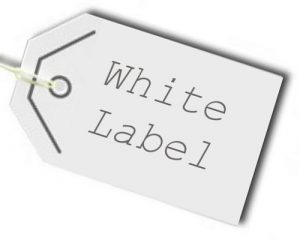
Selecting the best MT4 or MT5 white label provider for your new forex broker involves careful consideration. Because of set up fees and the time involved in obtaining an MT4 / MT5 white label, it’s important to carefully weigh these factors before launching your forex brokerage.
Our expertise in the foreign exchange industry and many years of experience make the Forex Consulting team a valuable resource for successfully navigating the many possibilities you’ll have when selecting a forex white label provider. We’ll outline some guidelines in today’s article that will no doubt be useful in helping you choose the best MT4 / MT5 white label partner for your new forex brokerage.
#1. Is The White Label Provider Regulated?
Regulation is an excellent way to determine if you are working with a reputable MT4/MT5 white label provider. Because obtaining a forex broker license requires a significant commitment of capital and resources, it’s an excellent factor to use in your decision making criteria. Consider the fact that office space, local staff members, accounting, and regulatory reporting are just some of the requirements for maintaining a forex broker license.
On the other hand, an unlicensed MT4/ MT5 white label provider doesn’t have to adhere to the same set of requirements, which poses a potential risk for a couple of reasons. First, a forex broker that has gone through the steps required to obtain a license is in a better financial position than an unregulated white label provider. Secondly, obtaining a forex broker license doesn’t happen overnight. Forex brokers that obtain regulation are interested in establishing a long term, forward looking brokerage, making a partnership with a licensed MT4 white label provider a more stable option.
#2. What Type of Trading Products Does The White Label Provider Offer?
The pricing, spreads, and trading products offered by each MT4 / MT5 white label technology firm will vary from provider to provider. Before you sign up for a white label, your new brokerage should first determine the types of trading products that you wish to offer to your clients.
Cryptocurrencies, for example, are now a popular trading product, with many forex brokers offering cryptocurrency trading as a complement to their suite of trading instruments. It’s important to highlight that some white label providers won’t able to provide liquidity in cryptocurrency. The same fact holds true not just for cryptocurrencies but certain stock CFDs, commodities, metals as well as more exotic forex pairs. For this reason, we strongly recommend choosing the trading products you intend to offer your clients before officially engaging with a white label provider.

#3. MT4 Group, Manager, Symbols and Other Software Limitations
The MetaTrader 4 software system has a finite number of groups, managers, and symbols associated with each server license. When deciding to sign up with a specific MT4 white label provider, it’s important to ask up front about the availability and limitations of the white label offering.
In some cases, the MT4 white label provider will have a limited offering for new brokers, which may be a reason to choose a more flexible provider, or to consider MT5. We understand, though, that some brokers prefer working with MT4 due to the existing popularity of the system, which is why the points in this section are worth noting.
We also suggest determining the type of spread mark ups and account tiers (Mini, Standard, VIP) you plan to offer your clients in advance. Mark up conditions and the ability to apply these settings to specific account groups are yet another set of limitations that MT4 white label providers will have to address; from our perspective, it is best to know the full picture as it relates to product availability because this information will be valuable in determining the best MT4 white label provider for your new brokerage.
#4 Does the White Label Provider Offer a CRM / Trading Portal?
Offering your clients the ability to easily open a live trading account, manage platform changes like passwords or address updates, make a deposit, as well as request a withdrawal are all essential services required for the success of any new forex brokerage. Not all, but most white label providers will offer CRM integration, commonly referrred to as a Trading Portal / Client Cabinet, to their new white label partners as part of the total package.
In order to have a competitive product offering, we strongly suggest integrating a CRM / Trader’s Room software solution into your FX broker’s website – if the MT4 / MT5 white label provider you are speaking with doesn’t offer this service, then we recommend searching for a different white label provider.
Forex Consulting Expertise – Guidance in Selecting the Best MT4 / MT5 White Label Provider for your New FX Broker
If you are currently in the process of selecting an MT4 or MT5 white label partner for your new forex brokerage, we are more than happy to assist you along each step of the way. Our team of FX consultants have successfully guided a variety of forex brokers with the set up of their MT4 & MT5 white labels, making the Forex Consulting team the ideal partner for establishing a new forex white label.
To learn more about setting up your MT4 / MT5 white label software, don’t hesitate to reach out to us. Our team of experienced consultants remain at your disposal.






